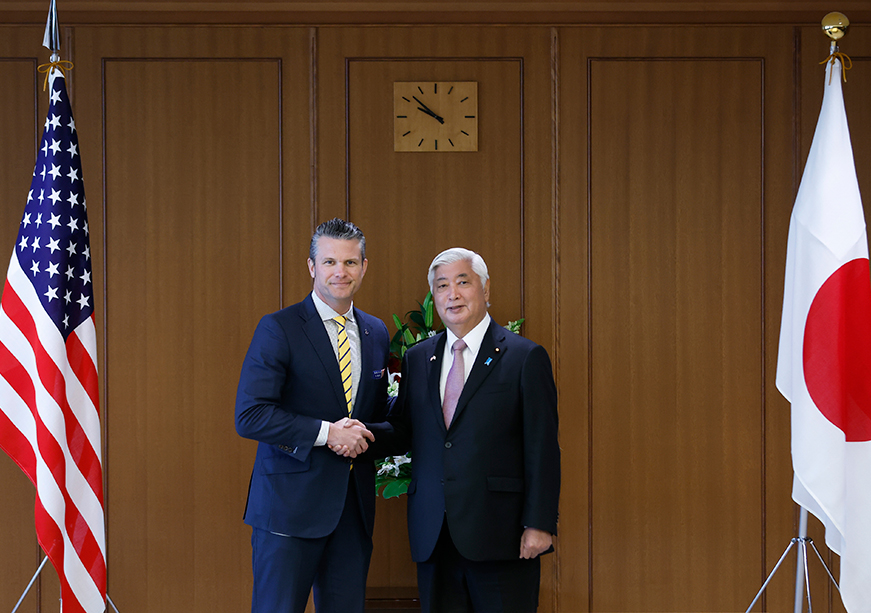
Image Source: Getty
The rapid pace of urbanisation, fuelled by demographic and economic growth, has led to an increase in private vehicle utilisation, compromising the sustainability of urban transportation systems in Indian cities. While public transportation is vital for attaining sustainable urban mobility, its efficacy is frequently undermined by competition from private and informal transport modes. As such, establishing a cohesive and integrated multimodal transport system that includes public, private and paratransit options is critical for sustainable urban development. Integrated multimodal transport systems require a comprehensive approach, addressing physical, operational, institutional, informational, and fare integration dimensions. Among these, informational integration, easily facilitated through the development of trip planner applications, stands out as a key enabler.
Integrated multimodal transport systems require a comprehensive approach, addressing physical, operational, institutional, informational, and fare integration dimensions.
Trip planners are sophisticated tools designed to enable smooth multimodal travel within urban environments by utilising available public transportation options. These systems assist commuters in organising their journeys from the point of origin to the destination, taking into account specific times of day, while also offering essential information such as total trip duration, fare details, and route specifics.
Numerous cities around the world have developed custom trip-planning solutions tailored to their unique public transport networks to improve accessibility and user experience for both residents and visitors. While these planners have been widely adopted, demonstrating unique features driven by regional requirements and technological capabilities, they commonly face challenges such as incomplete integration of all transport modes, inaccuracies in real-time data, and issues with user interface design. These tools are nevertheless a vital element of contemporary urban mobility solutions, enhancing efficiency and convenience within public transport systems.
Elements of an ideal trip planner
A recent research article titled "Evaluating Trip Planner Performance Across Global Cities", part of the Observer Research Foundation Global Policy (ORF-GP) series on "New Approaches for Integrated Multimodal Transport Systems", examined successful case studies of trip planners from around the globe and put forth a comprehensive framework for their assessment. This framework delineates essential features that an effective trip planner application should encompass:
- Journey planning: The application should empower users to devise trips between diverse origins and destinations using all available public transport modes. It should furnish real-time information regarding arrivals and departures and the availability of feeder services and allow for flexibilities in date and time inputs. Furthermore, it should present full-day service schedules and insights about notable attractions within the city.
- Real-time updates: The application must provide users with notifications concerning schedule modifications, service disruptions (e.g., reduced frequency or altered routes), and temporary closures. Access to real-time traffic updates, such as delays, road closures, traffic speeds, and crossing times, should be facilitated through webcasts or visual snapshots. Additionally, the availability of parking and associated costs should be included in real-time reporting.
- Mapping features: The application should illustrate active transport routes, cycling lanes, pedestrian pathways, and low-emission zones. It should also offer multilingual tourist maps and maps specifically designed for individuals with disabilities, including audio-enabled navigation tools.
- Fare information: The platform should encompass fare information, trip cost estimators, personalised payment histories, refund procedures, discount opportunities, transit card integration, and a unified ticketing system for seamless multimodal travel.
- Help and support: A robust assistance and contact system is crucial, featuring elements such as FAQs (frequently answered questions), live chat support, contact details, links to social media, and channels for submitting feedback.
- Additional information: The application should offer resources related to safety guidelines, transit interchange layouts, accessibility options for individuals with disabilities, platform or gate specifics, and information about public amenities, such as ATMs and restrooms.
Trip planners in Indian cities
The evaluation of Indian trip-planner applications across various cities highlights significant deficiencies in their functionality and coverage. Specifically, most trip-planning applications in Indian cities fail to provide essential resources outlined in the "Additional Information" section of the above framework. Crucial information, such as maps for cycle tracks, footpaths, emission zones, and tourist attractions, is conspicuously absent across all cities. Furthermore, accessibility features, such as audio maps and inclusive navigation tools for differently-abled individuals, are entirely missing. Information on points of interest (POIs) is also not provided.
The analysis of trip planner performance for 20 Indian cities, as proposed in the earlier mentioned study, reveals concerning trends. None of the evaluated cities achieved a performance rating classified as "Very Good" or "Good".
From a multimodal transport perspective, these applications lack critical data regarding feeder services and their schedules. As a result, visitors who rely on these applications for navigating public transport in unfamiliar cities often experience disappointment and inconvenience.
The analysis of trip planner performance for 20 Indian cities, as proposed in the earlier mentioned study, reveals concerning trends. None of the evaluated cities achieved a performance rating classified as "Very Good" or "Good". Trip planners for two cities, Mumbai and Delhi, were categorised as “Average”. Four cities—Surat, Kolkata, Bhopal, and Ahmedabad—were identified as "Poor". Alarmingly, the trip planners for the remaining 14 cities—Vadodara, Nasik, Nagpur, Chennai, Chandigarh, Bangalore, Kanpur, Prayagraj, Agra, Mathura, Varanasi, Indore, Amritsar, Pune, and Bhubaneswar—were classified under the “Very Poor" performance category.
This analysis underscores the urgent need to improve the quality, comprehensiveness, and accessibility of trip-planning applications in Indian cities to enhance the user experience and support sustainable urban mobility.
The way forward
Creating an efficient trip-planning application for multimodal journeys in Indian cities necessitates a holistic and systematic approach. The following key measures are critical for ensuring the successful implementation of such platforms:
- Indian cities should adopt policies that mandate the integration of diverse transportation modes—including buses, metro systems, auto-rickshaws, suburban trains, and e-bikes—into a unified digital platform. Such integration ensures that commuters have seamless access to real-time information on routes, schedules and fares. Successful international examples, such as Singapore’s MyTransport platform and London’s TfL Journey Planner, illustrate the value of centralised data sharing among transport operators in enhancing commuter convenience.
- To foster innovation and facilitate third-party application development, cities must enforce open data policies that require transport providers to share standardised datasets encompassing routes, schedules and occupancy rates. Frameworks adopted by cities like Helsinki and Los Angeles demonstrate how open data initiatives can enable the development of sophisticated multimodal trip-planning solutions.
- Investments in advanced technologies such as GPS (Global Positioning System), the Internet of Things (IoT), and artificial intelligence (AI) are essential to provide commuters with real-time updates on delays, traffic conditions, and predicted travel times. Real-time information significantly enhances the user experience by improving the accuracy and reliability of travel planning. While existing Indian applications like Ridlr and Chalo have made progress in this domain, their integration across multiple modes of transport remains incomplete.
- Trip-planning applications must be user-friendly, multilingual, and accessible to individuals with disabilities. Multilingual interfaces are critical to cater to India’s linguistic diversity, while adherence to accessibility standards ensures inclusivity. Global platforms such as Google Maps serve as benchmarks in providing these essential features.
- To build user trust, stringent regulations for data protection and cybersecurity must be established. With the increasing penetration of digital platforms, safeguarding user data is paramount to prevent misuse or breaches. Indian cities can draw lessons from the European Union’s General Data Protection Regulation (GDPR) to create robust data protection frameworks.
- Educating the public about the benefits of trip-planning applications and involving stakeholders in their development are crucial steps for fostering widespread adoption. Awareness campaigns and feedback mechanisms have proven effective in improving user engagement, as demonstrated by Singapore’s Smart Nation initiatives.
- Cities must establish regulatory frameworks to ensure interoperability among various transport services and trip-planning platforms. This interoperability ensures seamless coordination between systems such as metro networks, bus services, and ride-hailing platforms, as evidenced in cities like Tokyo, where transport services operate cohesively.
By implementing these strategic measures, Indian cities can develop robust, user-friendly trip-planning applications that streamline multimodal travel, alleviate urban congestion, and encourage the use of public transportation systems.
Nandan H Dawda is a Fellow with the Urban Studies programme at the Observer Research Foundation.
The views expressed above belong to the author(s). ORF research and analyses now available on Telegram! Click here to access our curated content — blogs, longforms and interviews.




 PREV
PREV


